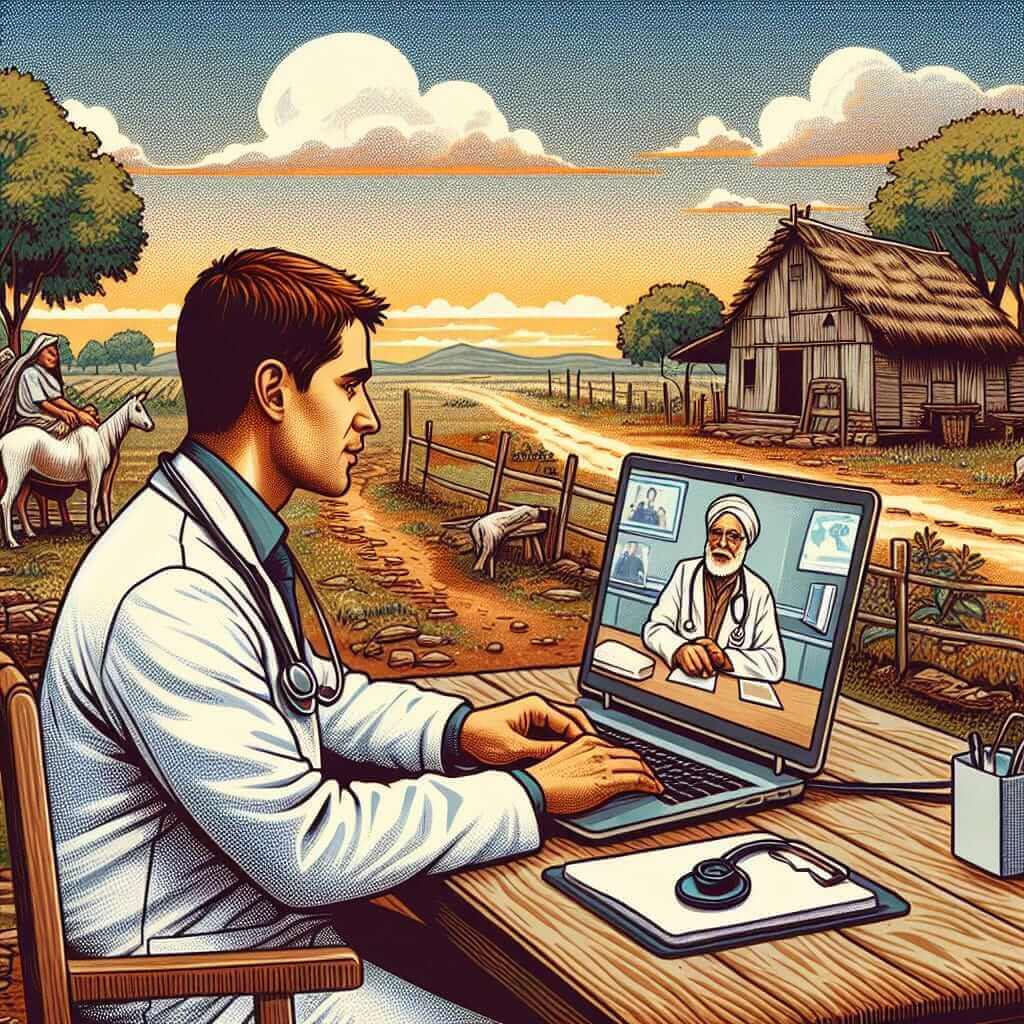The IELTS Reading section is often considered challenging by many candidates due to the depth and breadth of content it covers. Topics such as technology in healthcare have become increasingly common in recent times. One such pertinent issue is “How is the growth of telemedicine affecting healthcare access in rural areas?” Analyzing this topic not only prepares you for the IELTS exam but also keeps you informed about a contemporary global issue.
This particular topic has seen increasing frequency in IELTS exams due to its relevance in today’s technological and healthcare landscape. Given the COVID-19 pandemic and the rise of digital solutions, telemedicine has become a significant area of interest. Therefore, it’s not far-fetched to predict similar topics appearing in future exams.
Main Content
Sample IELTS Reading Passage: Hard Text Level
Telemedicine has emerged as a revolutionary means to enhance healthcare access, particularly in rural areas where medical resources are scarce and healthcare infrastructure is underdeveloped. This technological advancement leverages telecommunications networks to allow patients and healthcare providers to interact and exchange essential medical information remotely.
Historically, rural areas have been underserved in terms of healthcare access due to several factors such as geographic isolation, scarcity of healthcare professionals, and limited infrastructure. These challenges have led to significant disparities in healthcare outcomes between urban and rural populations.
Telemedicine addresses these issues by enabling remote consultations, diagnostics, and even treatment plans. Through the advent of telehealth platforms, patients can receive medical advice without the need to travel long distances. This not only saves time and travel costs but also ensures that patients have quicker access to medical care, which can be vital in emergencies.
Furthermore, telemedicine fosters better management of chronic diseases by allowing continuous monitoring and frequent check-ins with healthcare providers. This is particularly beneficial for elderly patients who may find it cumbersome to travel frequently for routine check-ups. Additionally, the use of telemedicine can mitigate the burden on overstrained rural hospitals and clinics by decentralizing patient care.
One of the significant challenges of implementing telemedicine in rural areas, however, is the lack of reliable internet connectivity. Telemedicine relies heavily on stable and high-speed internet connections to facilitate seamless communication between patients and healthcare providers. Therefore, infrastructural improvements in internet services are crucial for telemedicine to reach its full potential in rural areas.
Despite these challenges, the benefits of telemedicine in enhancing healthcare access are indisputable. It not only bridges the gap between rural and urban healthcare but also promotes a more equitable and efficient healthcare system.
 Telemedicine Affecting Rural Healthcare Access
Telemedicine Affecting Rural Healthcare Access
Questions
-
Multiple Choice:
- What is one of the primary benefits of telemedicine in rural areas?
- A) Reducing the number of healthcare professionals needed
- B) Enabling remote consultations and diagnostics
- C) Eliminating the need for healthcare infrastructure
- D) Ensuring only emergency healthcare is provided
- Which of the following is a significant challenge for telemedicine in rural areas?
- A) Geographic isolation
- B) Lack of healthcare professionals
- C) Unreliable internet connectivity
- D) Overstrained rural hospitals
- What is one of the primary benefits of telemedicine in rural areas?
-
True/False/Not Given:
- Telemedicine can completely replace traditional healthcare systems in rural areas. (False)
- Continuous monitoring via telemedicine is especially beneficial for elderly patients. (True)
- Telemedicine has removed all healthcare disparities between rural and urban areas. (False)
-
Matching Information:
Match the items with the correct information:- Telemedicine relies on:
- A) High-speed internet connections
- B) Geographic locations
- C) Chronic disease management
- D) Emergency healthcare
- Telemedicine relies on:
Answer Keys
-
Multiple Choice:
- B) Enabling remote consultations and diagnostics
- C) Unreliable internet connectivity
-
True/False/Not Given:
- False
- True
- False
-
Matching Information:
- Telemedicine relies on:
- A) High-speed internet connections
- Telemedicine relies on:
Common Mistakes and Tips
Students often make errors in:
- Misunderstanding key terms: Clarify unfamiliar terms such as “telehealth platforms,” “chronic disease management,” and “decentralizing patient care.”
- Incorrectly answering True/False/Not Given questions: Focus on the information provided in the text and not your own knowledge or assumptions.
Tips:
- Skim the passage first to get a general idea.
- Identify keywords in questions and scan the passage to find them.
- Practice various question types to become familiar with different formats.
Vocabulary Focus
- Telecommunications (n.) /ˌtɛlɪˌkʌmjʊˈnɪkeɪʃənz/: the transmission of signals over long distances.
- Geographic isolation (n.) /dʒiːəˈɡræfɪk ˌaɪsəˈleɪʃən/: the separation of a population based on geography.
- Chronic (adj.) /ˈkrɒnɪk/: persisting for a long time or constantly recurring.
- Consultation (n.) /ˌkɒnsəlˈteɪʃən/: a formal meeting with an expert for advice.
Grammar Focus
- Passive Voice Construction: “Telemedicine is implemented in rural areas.”
- Structure: [Auxiliary verb (is/was etc.)] + [Past Participle].
- Example: “Patients are monitored remotely.”
Recommendations for High IELTS Reading Scores
- Practice Regularly: Regular exposure to a variety of texts will improve speed and comprehension.
- Understand Question Types: Familiarize yourself with the different types of questions and practice them.
- Improve Vocabulary: Learning new words contextually will enhance understanding.
- Time Management: Develop strategies to quickly skim through texts and locate key information.
By reinforcing these strategies and paying attention to the types of questions, candidates can greatly improve their performance in the IELTS Reading section.


